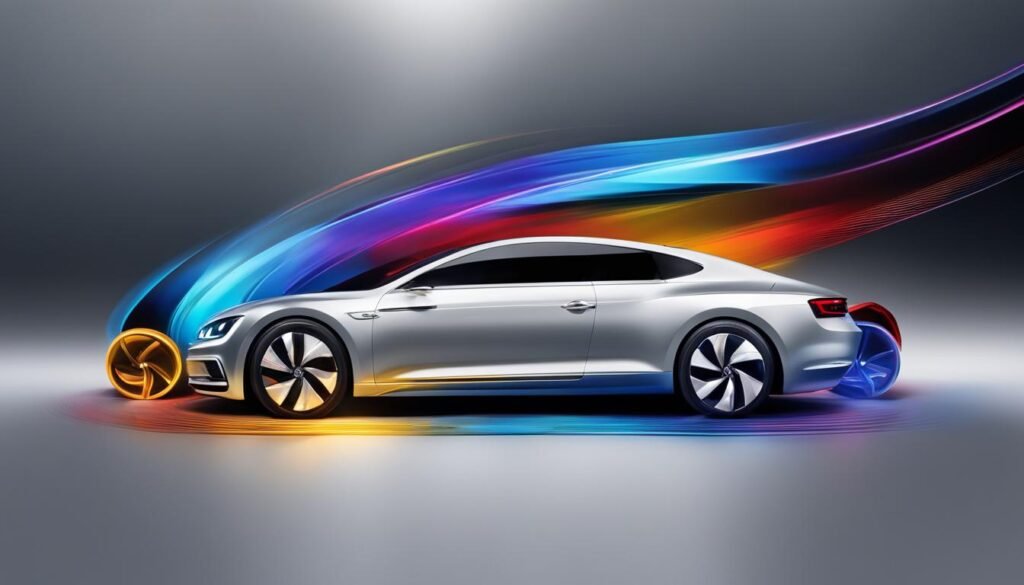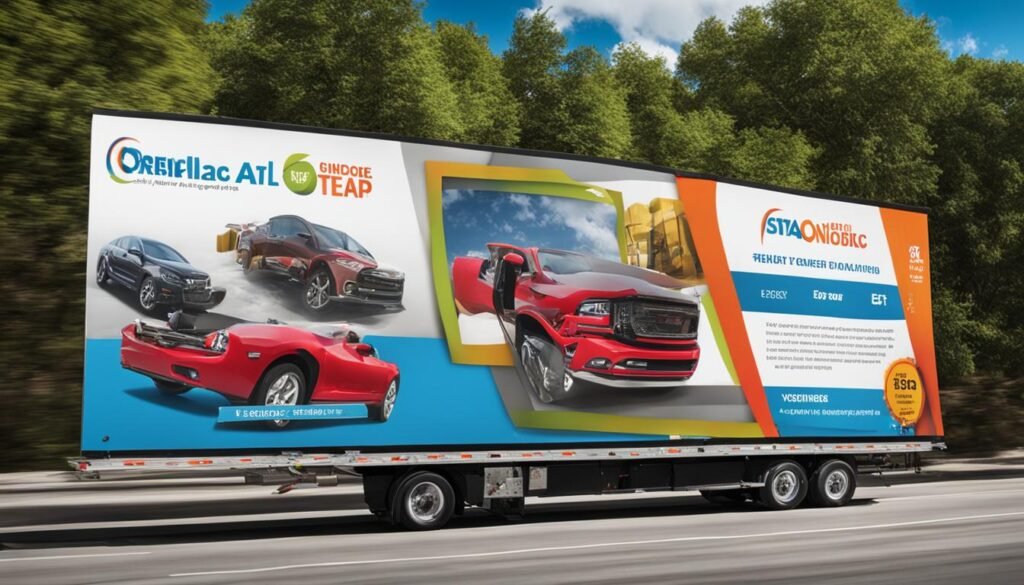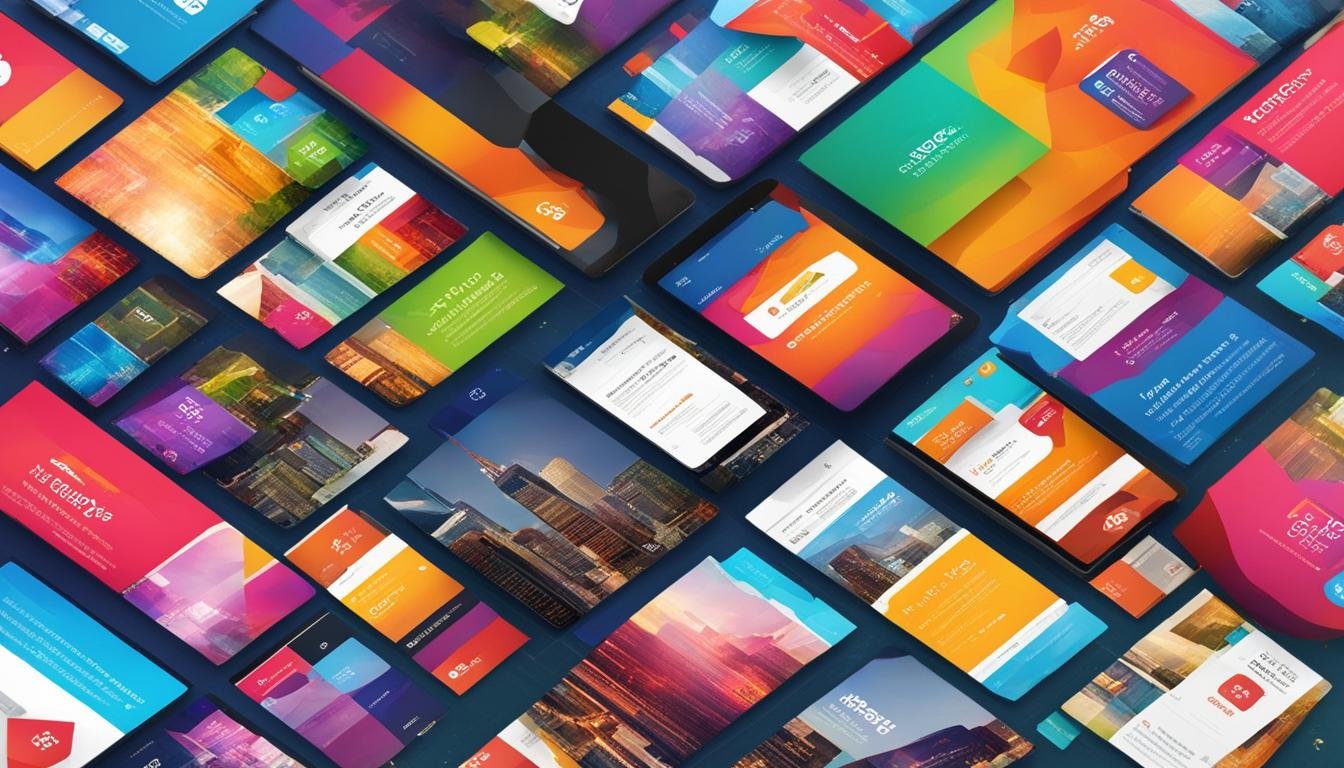Banner Ad Examples : Compelling banner ads can drive marketing success by leaving meaningful, lasting impressions rather than just immediate clicks. Successful examples utilize tactics such as side-by-side comparisons, invoking emotional responses through visual imagery, addressing skepticism, and leveraging exclusivity and nostalgia. A variety of these ads, from institutions like Bridgewater State University to entertainment services like Disney+, illustrate versatility in approaches, from questioning prospects’ aspirations to asserting brand dominance in a niche, establishing authority, and highlighting product benefits. Detailed breakdowns of what makes each ad impactful offer insight into the principles of effective banner ad design and copy.
Key Takeaways
- Effective banner ads create meaningful impressions and drive marketing success
- Successful examples use tactics like comparisons, emotional responses, skepticism, and leveraged exclusivity
- Institutions like Bridgewater State University and Disney+ showcase diverse ad strategies
- Understanding different approaches helps fine-tune ad design and copy
- Analyzing successful ads provides valuable insights into creating compelling banner ads
Understanding Banner Advertising and Its Impact
Banner advertising is a significant investment that can yield widespread, targeted exposure and high return on investment (ROI) through retargeting. Despite lower click-through rates compared to search ads due to less direct targeting, display ads foster brand familiarity and recognition.
With the Google Display Network reaching 90% of online users, understanding how to craft effective banner ads is paramount for tapping into extensive audience engagement. In this section, we will examine the impact of well-crafted banner ads and their importance in modern digital marketing.
Effective banner ads not only drive initial engagement but also have potential long-term effects on brand awareness, thus contributing to a business’s overall success.
Well-designed banner ads can make a world of difference in a digital marketing campaign. They have the potential to significantly increase brand awareness and customer curiosity, prompting website visits and conversions.
While it’s true that banner ads often have lower click-through rates than their search ad counterparts, they offer businesses the opportunity to build and reinforce their brand image. This can lead to stronger brand recall and recognition, which ultimately drives customers to engage with and purchase from the brand down the road.
- Analyze target audience preferences and behaviors
- Develop a visually appealing and persuasive ad design
- Optimize ad placement to attract maximum attention
- Regularly measure and analyze ad performance
- Iterate and improve banner ad strategies based on performance data
By following these steps, businesses can ensure they create and launch effective banner ads, maximizing their impact on brand awareness and customer engagement.
| Banner Ad Element | Impact on Audience |
|---|---|
| Attractive Design | Captures attention and sparks curiosity |
| Relevant Messaging | Resonates with target audience and drives engagement |
| Optimized Placement | Increases visibility and reach |
| Regular Monitoring & Analysis | Provides insights to improve overall ad performance |
In summary, understanding the importance of banner advertising and its impact on brand familiarity and recognition is essential for creating effective ads. Through analyzing target audience preferences and behaviors, developing visually appealing and persuasive ad designs, optimizing ad placement, and monitoring performance, businesses can leverage banner ads for maximum impact in their digital marketing campaigns.
Crafting Compelling Ad Copy for Banner Success

The right ad copy in banner advertising can significantly enhance click-through rates. Effective copywriting tactics such as addressing pain points, creating curiosity gaps, and direct comparison can make a massive impact on banner ad performance.
For instance, addressing the ‘check engine’ warning light in the AutoZone ad specifically targets a familiar issue to attract prospects’ attention, showcasing copywriting effectiveness.
Analyzing the Role of Copy in Click-Through Rate
Click-through rate is an essential metric when evaluating the success of banner ads. Well-crafted ad copy can capture the attention of potential customers, prompting them to click on the ad and learn more about the product or service offered. Some proven techniques to increase the effectiveness of ad copy include:
- Addressing pain points: Identifying common issues or challenges faced by the target audience and offering a solution through the advertised product or service.
- Creating curiosity gaps: Piquing the user’s interest by offering some information but leaving them wanting more, encouraging them to click on the ad.
- Direct comparison: Comparing the advertised product or service with competitors in the market to demonstrate its superiority and convince the user to choose your brand.
Case Studies: Banner Ads with Captivating Messages
Various banner ads across industries demonstrate effective ad copy strategies for engaging prospects.
| Brand | Ad Copy Strategy | Result |
|---|---|---|
| Bridgewater State University | Provoking self-reflection through questions like “What kind of person do you want to be?” | Connects with the audience and encourages them to consider their potential with the university. |
| DocuSign | Creating curiosity with headlines like “The #1 overlooked strategy to close deals faster.” | Captures the audience’s attention and prompts them to click for more information on the strategy. |
Each case study showcases the role of well-crafted ad copy in creating successful banner ads that effectively engage prospects and encourage them to take action.
Designing Visually Stunning Banner Ads

A successful banner ad combines persuasive ad copy with eye-catching visuals that demand attention. The design elements of a banner ad can range from minimalistic to vibrant, as seen in the examples from Apple and Lex. Both of these brands effectively convey their messages through simple designs and color contrasts.
In this section, we will explore different design strategies that make banner ads visually stunning and memorable, often making primary messages leap off the screen or creating a sense of community.
- Minimalistic Design: Apple is known for its sleek and minimalistic design approach. With a straightforward design and very few elements, Apple’s ads showcase the power of simplicity in capturing the attention of the viewers.
- Color Contrasts: LEX, on the other hand, employs vibrant color contrasts in its banner ads to make the message pop and grab the attention of the viewers. Bold colors complement the ad copy and make a strong visual impact.
- Primary Message Focus: A successful banner ad ensures that the main message is the focal point of the design. The Capital One ad, for example, features a minimalistic design with a large, bold headline, ensuring that the primary message takes the spotlight.
- Creating a Sense of Community: Liberty University’s banner ad uses images of students and alumni to invoke a sense of belonging and community, appealing to prospective students and other viewers who might be interested in joining the institution.
These design strategies not only make a banner ad visually stunning but also contribute to its overall effectiveness and impact.
“Design is not just what it looks like and feels like. Design is how it works.” – Steve Jobs, Co-founder of Apple Inc.
To create effective banner ads, one should pay attention to every aspect of design, from colors and imagery to typography and layout. By incorporating these design principles, advertisers can craft visually stunning ads that effectively convey their brand message and leave a lasting impression on viewers.
Leveraging Color Psychology in Banner Ads
Color plays a critical role in the impact of banner ads through its ability to attract attention and convey brand messages. Companies, such as Geico and Merrell, demonstrate this by leveraging color and contrast to enhance ad visibility. The psychology behind color choices can significantly affect consumer behavior, emphasizing the connection between color schemes and promotional strategy that resonates with target audiences.
The Influence of Color on Consumer Behavior
Various colors can provoke different emotional responses and associations, which can influence purchasing decisions and brand perceptions. For example:
- Red is often associated with energy, excitement, and urgency, and can encourage impulsive buying.
- Blue evokes feelings of trust, reliability, and calmness, making it a popular choice for businesses seeking to establish credibility.
- Green is commonly linked to nature, health, and eco-friendliness, making it suitable for companies in the health and wellness industry.
- Yellow can represent optimism and happiness, but it can also signify caution when used in the wrong context.
By strategically selecting colors that align with the intended message or emotion, marketers can create a more impactful banner ad that connects with their target audience.
“The best color in the whole world is the one that looks good on you.” – Coco Chanel
Color contrast is another essential factor to consider. A well-designed banner ad should have a high contrast between the background and the text or elements within it to ensure readability and visual appeal. It is crucial to test different color combinations and assess which ones produce the highest engagement and click-through rates for a specific audience.
Considering these factors, marketers can make more informed decisions about the colors they incorporate into their banner ads, ultimately creating a more powerful promotional strategy that captures audience attention and drives brand awareness.
Integrating Interactive Elements into Banner Ads

Interactive elements within banner ads can significantly enhance user engagement and potentially create long-lasting brand memories. By incorporating interactive aspects into the design, advertisers can keep prospects interested long enough to click, further increasing the ad’s overall impact and effectiveness. One notable example of this is Volkswagen’s “Blank like a Rabbit” web banner, which achieved high levels of interactivity and engagement.
To further explore the benefits of incorporating interactive elements in banner ads, consider gamification and its advantages:
- Increased user engagement: Interactive ads, such as those with games or quizzes, can encourage users to engage with the content for a longer duration, increasing the likelihood of click-throughs.
- Memorable user experience: Users are more likely to remember ads they interacted with, directly leading to better brand recognition.
- Higher ad sharing potential: Users are more likely to share interactive ads, resulting in increased exposure and reach for the advertiser.
“When we think about how most people experience banner ads, it’s often just a fleeting, passive interaction. But with interactive elements, we have the potential to create deeper, more meaningful connections with users that can contribute to long-term brand recognition and success.”
Here are some innovative interactive banner ad ideas that can be implemented to enhance user engagement:
| Idea | Description | Example |
|---|---|---|
| Swipe or slide mechanism | Encourages users to swipe or slide through different parts of the ad and discover more information about the product or service advertised | Spotify’s banner ad that allows users to swipe through song lists |
| Interactive video | Embed a video within the banner ad, allowing users to play, pause, or interact with the video’s content | BMW’s interactive video ad that prompts users to control the movement of the car within the ad |
| Quiz or poll | Invite users to participate in a quiz or poll to obtain more information about their interests and preferences | A skincare brand’s banner ad containing a quiz to help users find a product suitable for their specific skin type |
In conclusion, integrating interactive elements into banner ads can significantly enhance user engagement, drive click-through rates, and create lasting brand memories. While it may require additional effort and planning, incorporating interactivity can ultimately generate a substantial return on investment for advertisers.
Maximizing Brand Awareness with Memorable Banner Designs

Creating memorable banner designs that effectively convey and promote brand identity is essential for maximizing brand awareness. By skillfully aligning with brand strategy and utilizing visuals and messages consistent with established visual identity, such designs invite recognition and leave lasting impressions. This section explores some exemplary brand-centric banner advertisements and discusses how to assess the long-term impact of branding in ads.
Examples of Brand-Centric Banner Advertisements
Some leading brands have successfully leveraged banner ads to make a lasting impact on consumers by focusing on their brand identity. For instance, Apple’s emoji-themed ads showcase their unique and delightful emojis while subtly embedding the Apple brand.
Another example of a brand-centric banner advertisement is Hermes’ enigmatic visuals. Known for its luxurious, sophisticated products, Hermes uses an intriguing image and minimal text to arouse curiosity and evoke their brand’s upscale, mysterious qualities. On the other hand, Google’s banner ads often adopt a more personal approach to emphasize its user-friendly products and services, thereby subtly incorporating brand elements that foster long-term brand awareness.
Assessing the Long-Term Impact of Branding in Ads
To understand the long-term impact of branding in banner ads, it is crucial to assess how they persist in consumer memory and contribute to overall brand recognition. Ads with memorable designs and on-brand messaging are more likely to make a lasting impact on viewers. These ads encourage the audience to link the ad visuals and messages with the brand subconsciously, creating recognition that goes beyond the ad itself.
The effectiveness of brand-centric banner advertisements can be evaluated by:
- Measuring viewer recall of the brand through surveys, feedback, or social media engagement.
- Tracking post-view conversions, which indicate the number of users who engaged with the banner ad and completed a desired action (e.g., visiting the website, making a purchase, etc.)
- Monitoring brand performance metrics, such as search queries for the brand, social media mentions, and website traffic, to reveal the overall impact of the ad on brand awareness.
By analyzing these aspects, brands can gain insights into how their banner ads have influenced consumer perception and their long-term brand awareness strategy.
“Memorable banner designs skillfully align with brand strategy, inviting recognition in a format consistent with established visual identity.”
Creating a Strong Call to Action (CTA)

For banner ads to be effective, a strong call to action (CTA) is crucial as it encourages viewers to take the desired action. CTAs use persuasive language to guide users in the right direction, whether leading them to learn more about the offering, sign up for a service, or purchase a product. There are different approaches to designing compelling CTAs, as apparent in numerous banner ad examples.
Direct approaches feature concise and explicit calls-to-action, such as “Learn More,” “Shop Now,” or “Go Ad-Free.” The effectiveness of these CTAs lies in their immediacy and simplicity, which can drive instant engagement and results.
Examples of direct CTAs: “Learn More,” “Shop Now,” “Go Ad-Free”
In contrast, more implicit CTAs rely on emotional appeals and personal motivation, encouraging viewers to take action by emphasizing the impact of their choices. One example of an implicit CTA is seen in Big Brothers Big Sisters’ banner ad, which inspires autonomy and empowers viewers to contribute to positive change.
- Direct Call to Action
- Immediate and straightforward CTAs
- Examples: “Learn More,” “Shop Now,” “Go Ad-Free”
- Implicit Call to Action
- Emotion-driven and motivational CTAs
- Example: Big Brothers Big Sisters – “You have the power to change a child’s world”
When selecting the right CTA for a banner ad, it is essential to consider the target audience, desired outcome, and the overall advertising strategy. Balancing these factors can help maximize the effectiveness of the call to action, leading to higher engagement and conversion rates.
| CTA Approach | Description | Examples |
|---|---|---|
| Direct Call to Action | Immediate and straightforward CTAs | “Learn More,” “Shop Now,” “Go Ad-Free” |
| Implicit Call to Action | Emotion-driven and motivational CTAs | Big Brothers Big Sisters – “You have the power to change a child’s world” |
In conclusion, creating a strong call to action is pivotal in ensuring banner ad effectiveness and encouraging audiences to engage. Direct and implicit CTAs each have their strengths; the optimal choice depends on the specific goals and target audience of the advertising campaign.
Banner Ad Placement Strategies for Optimal Visibility
Placement of banner ads significantly affects visibility and engagement. The strategic location of ads in digital spaces, such as above the fold on high-traffic websites, can lead to increased visibility and potentially higher click-through rates due to immediate exposure. Comparative analysis of ad placements reveals that ads located above the fold tend to have better visibility as they do not require scrolling, thus attracting immediate attention. However, strategic placement both above and below the fold can cater to different audience behaviors and optimize overall ad performance.
Deciphering the Best Locations for Your Ads
Finding the most effective locations for your banner ads is essential to ensure maximum visibility and engagement. Consider placing ads in areas with high user interaction and those that complement website content to enhance the user experience. Analyzing website data to track user behavior, and testing ad placements are useful tactics to identify the best locations for displaying banner ads.
Comparative Analysis of Above the Fold vs. Below the Fold
Understanding the differences between ad placements above and below the fold is crucial to developing an optimal banner ad strategy. Here is a comparison of their respective benefits:
| Ad Placement | Benefits |
|---|---|
| Above the Fold | Immediate visibility Potentially higher click-through rates Increased exposure to first-time visitors |
| Below the Fold | More engagement from users scrolling through content Opportunity for strategic ad placements within articles Potential to target specific segments of your audience |
While above the fold placements tend to generate immediate attention, below the fold placements present opportunities for strategic targeting and engagement. It is advisable to utilize both types of placements and monitor their performance metrics to find the optimal balance for banners ads that caters to different audience behaviors and enhances overall ad success.
Effective Banner Ad Size and Format
Choosing the right banner ad size and format is crucial for promoting businesses and products effectively in digital marketing. Standard banner sizes have specific performance metrics, which directly affect the reach and engagement of your ads. Adopting the most suitable ad dimensions is essential for any successful display campaign.
Banner advertisers should also consider the impact of their chosen ad formats on both display and conversion rates. Formats such as static images (.jpg, .png), animated images (.gif), or interactive rich-media (.html) banners can render contrasting results, with interactivity often proving to be the most engaging option for viewers.
Standard Banner Sizes and Their Performance Metrics
According to the Interactive Advertising Bureau (IAB), standard banner sizes are widely adopted across the online advertising industry, responsible for ensuring high-level performance and compatibility with various devices and platforms. Known as the ‘IAB ad units,’ these sizes range from large to small, with some proven more effective than others.
Here, we present a comprehensive table of the most common banner ad sizes recommended by the IAB and their corresponding performance metrics:
| Ad Size (in pixels) | Ad Unit Name | Performance Metrics |
|---|---|---|
| 300×250 | Medium Rectangle | High click-through rates, suitable for desktop and mobile placements |
| 336×280 | Large Rectangle | Demonstrates higher click-through rate than medium rectangle; best suited for desktop |
| 300×600 | Half Page | Increased visibility, high-impact format for both desktop and mobile users |
| 728×90 | Leaderboard | Usually appears above primary content, offering good visibility for desktop users |
| 468×60 | Standard Banner | Widely used on desktop, but now considered less effective due to larger ad units’ popularity |
| 320×50 | Mobile Leaderboard | Optimized for mobile placements, high click-through rate for mobile users |
By strategically selecting the most effective banner ad sizes and formats, advertisers can optimize engagement and ROI. In turn, this can maximize the success of display campaigns by ensuring compatibility, greater reach, enhanced visibility, and increased user interaction.
Incorporating Animations and Video Elements in Banner Ads
The incorporation of animations and video elements can greatly enhance the impact of banner ads, making them more attention-grabbing and engaging. Examples from renowned brands like IBM and Brita effectively illustrate the benefits of such visual components in advertising.
Animated and video elements can contribute to increased ad performance metrics, as long as they are optimized correctly for loading times and viewer experience. To effectively use animations and video elements in banner ads, consider the following:
- Ensure the animation or video aligns with the brand’s message and tone.
- Optimize the file size to minimize loading times and prevent delays for users.
- Keep the animation or video short and concise to hold viewer attention effectively.
- Make certain that the advertisement remains accessible, particularly ensuring that text content is easily readable.
Animations and video elements are potent tools to break through the noise of online advertising. When used effectively, they can significantly uplift banner ad performance by captivating viewers and driving engagement.
“Animation can explain whatever the mind of man can conceive. This facility makes it the most versatile and explicit means of communication yet devised for quick mass appreciation.” – Walt Disney
Let’s take a closer look at Brita and IBM’s banner ads, which effectively utilized animations and video elements in their campaigns.
| Brand | Objective | Technique |
|---|---|---|
| Brita | Promoting the benefits of using their water filtration products | Animated ad showcasing a bottle filling with clean water |
| IBM | Increasing awareness and interest in the IBM Blockchain platform | Developing an eye-catching video ad detailing the platform’s capabilities |
By analyzing these successful banner ad campaigns, it’s clear that the strategic integration of animations and video elements can elevate advertisement impact and drive audience engagement. Incorporating animations and video in banner ads, when done thoughtfully and in alignment with the brand’s message, can result in a powerful and visually appealing advertising medium that leaves lasting impressions on viewers.
Case Study Showcase: Successful Banner Ad Campaigns
In this section, we will explore several successful banner ad campaigns by prominent brands such as Volkswagen (VW) and Microsoft to uncover strategies that contributed to their success. Our case studies will focus on their innovative features, personalized messaging, and ad optimization techniques.
- Volkswagen’s Interactive Banner Ad Campaign
- Microsoft’s Multi-Ad Campaign
Volkswagen’s Interactive Banner Ad Campaign
Volkswagen crafted a captivating and interactive banner ad campaign called “Blank like a Rabbit” to promote their new Golf model. This campaign’s primary goal was to demonstrate the Golf’s fuel efficiency and engage the audience with an interactive slider to showcase the vehicle’s capabilities while adding an element of fun.
| Campaign Components | Key Outcomes |
|---|---|
| Interactive Slider | Intrigued viewers, encouraged engagement |
| Fuel Efficiency Messaging | Highlighted Golf’s competitive edge |
| Strong Call to Action | Increased click-through rate |
Volkswagen’s campaign succeeded because it focused on user engagement and clear messaging, resulting in higher click-through rates and sales.
Microsoft’s Multi-Ad Campaign
Another highly effective banner ad campaign is Microsoft’s multi-ad series promoting their Surface product line. The campaign employed several versions of the ad with varying copy and images, optimized to cater to different target audience segments.
“Get work done anywhere on a Surface Pro 7”
“Surface Pro 7 – Built for businesses, made for users”
By creating multiple ads with distinct copy tailored to various audiences, Microsoft was able to test and optimize performance, ensuring higher conversions and better overall results.
| Campaign Components | Key Outcomes |
|---|---|
| Multiple Ad Variations | Reached diverse audience segments |
| Customized Copy | Resonated with target demographics |
| Performance Optimization | Higher conversion rates |
These case studies demonstrate the significance of incorporating innovative features, personalized messaging, and optimization tactics to create successful banner ad campaigns that drive engagement and conversion rates.
Conclusion
In conclusion, powerful banner ad examples from various brands and industries demonstrate that the success of digital marketing relies on a combination of carefully crafted ad copy, compelling design, and strategic placement. In order to generate higher engagement, brand memorability, and conversion rates, these best practices should be implemented in banner advertising campaigns for any business seeking online marketing success.
By studying the successes of well-executed banner ads, marketers can harness tactics such as addressing pain points, invoking emotional responses, and leveraging color psychology to create impactful ad copy and design that resonate with target audiences. Furthermore, considering key aspects such as ad size, format, and interactivity will only further enhance a banner ad’s overall effectiveness.
Ultimately, to achieve marketing success, businesses need to recognize the value of banner advertising and continuously strive to optimize their ads by refining creative elements, strategically placing ads for optimal visibility, and conducting thorough testing to identify and apply best practices. When consistently utilized, these elements culminate in powerful, effective banner ad campaigns that drive online engagement and conversions.
Also Refer : Unlock Creativity With Top-Notch Banner Ad Design Services
FAQS
What are the key components of a successful banner ad?
The key components of a successful banner Google ads include strategic ad copy, eye-catching design display advertising, thoughtful placement, engaging interactivity, and a strong call to action. Utilizing color psychology and maximizing brand awareness are also crucial elements in creating a powerful banner ad.
How does color psychology impact consumer behavior in banner advertising?
Color psychology affects consumer behavior by evoking certain emotions, reactions, and associations. Advertisers need to understand the connection between color schemes and their target audience’s preferences or values to create ads that resonate effectively with the audience.
What role does ad placement play in banner ad success?
Ad placement significantly affects banner ad visibility and engagement. Strategically placing ads in high-traffic digital spaces, like above the fold on popular websites, can lead to increased visibility and potentially higher click-through rates.
How do interactive elements boost the effectiveness of banner ads?
Interactive elements can engage viewers more deeply, potentially creating longer-lasting brand memories. Incorporating interactive aspects into banner design may increase ad engagement and keep prospects interested long enough to click, strengthening the overall impact of the ad.
How can animations or video elements enhance banner ads?
Animations and video elements make banner ads more noticeable and can significantly improve ad performance metrics when optimized correctly for loading times and viewer experience. These features can increase engagement, brand recall, and conversion rates.
What is the role of ad copy in banner ad success?
Ad copy is crucial in banner advertising as it can significantly enhance click-through rates. Effective ad copy addresses pain points, creates curiosity gaps, and presents direct comparisons to capture the attention of prospects, leading to increased engagement and conversion rates.
How can brand awareness be maximized through banner ads?
Brand awareness is maximized through banner ads by utilizing memorable designs and consistent visual identity that aligns with an established brand strategy. This approach fosters long-term brand recognition and recall, creating a lasting impression on viewers.
What is the importance of a strong call to action (CTA) in banner advertising?
A strong call to action (CTA) in banner advertising is pivotal for driving immediate action, such as click-throughs, sign-ups, or purchases. By using persuasive, direct language that appeals to viewers’ sense of urgency or agency, a robust CTA can significantly improve ad performance and drive conversions.
What are banner ad examples?
Banner ad examples are visual representations of different types of display advertisements used for digital marketing. These examples showcase different design styles, call-to-action strategies, and ad placements to inspire and guide marketers in creating effective banner ads.
How can I create powerful banner ads?
To create powerful banner ads, focus on compelling visuals, persuasive copy, and a clear call to action. Use graphics and colors that grab attention, craft concise and impactful ad copy, and guide users to take the desired action, such as clicking on the ad to visit a landing page.
What are some examples of successful banner ads?
Successful banner ad examples include eye-catching graphics and engaging copy that effectively convey the brand message and prompt type of ad user interaction. These examples can range from dynamic display advertising on Google Ads to captivating web banner advertising on various websites.
How do banner ads contribute to digital marketing?
Banner ads are a fundamental component of digital marketing as they offer brands a way to promote their products or services across the web. They help increase brand visibility, drive traffic to a specific landing page, and encourage users to engage with the ad, ultimately leading to potential conversions.
What makes a good banner ad?
A good banner ad is visually appealing, conveys a clear and concise message, includes a strong call to action, and is strategically placed to reach the target audience. Additionally, it should align with the brand’s overall marketing strategy and showcase creativity and originality.
How can video ads be integrated into banner advertising?
Video ads can be integrated into banner advertising by featuring short, compelling video clips within the banner ad space. These video ads can provide a more immersive and engaging experience for users, driving higher levels of interaction and increasing the likelihood of capturing their attention.
What are the key elements of a successful landing page for banner ad campaigns?
A successful landing page for banner ad campaigns should be visually consistent with the banner ad, offer a clear and compelling value proposition, and provide a seamless user experience. It should also include a prominent call to action and be optimized for conversions.
Can you provide 10 banner ad examples for marketing inspiration?
While I can’t display them here, 10 banner ad examples can be found across various digital advertising platforms and websites, showcasing a range of design styles, messaging approaches, and creative concepts to inspire and guide marketing efforts.
How can I engage with the ad space in web banner advertising?
To engage with the ad space in web banner advertising, focus on creating visually appealing and attention-grabbing banner ads that resonate with the target audience. Additionally, consider incorporating interactive elements or animations to enhance user engagement.
What are some tips for creating great banner ads for Google Display Ads?
When creating banner ads for Google Display Ads, focus on using high-quality visuals, concise yet impactful ad copy, and clear calls to action. Ensure that your ads are designed to resonate with the audience and align with the specific targeting criteria for your display ad campaigns.





